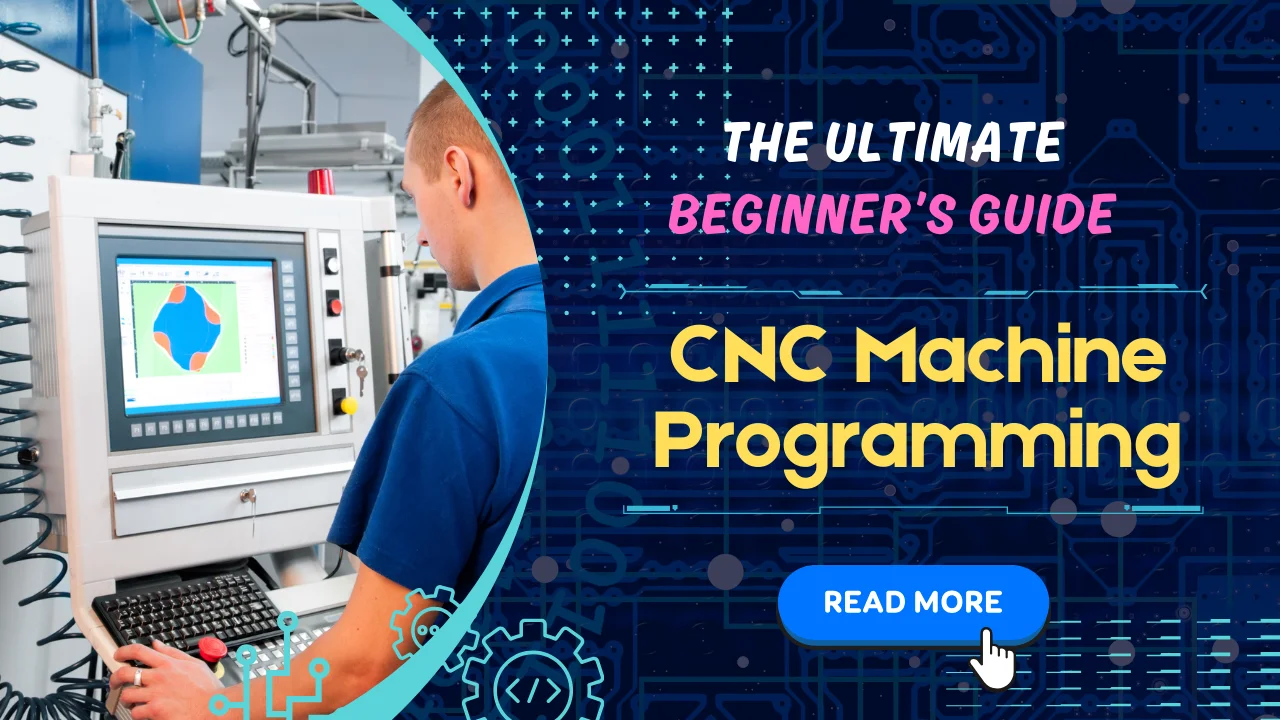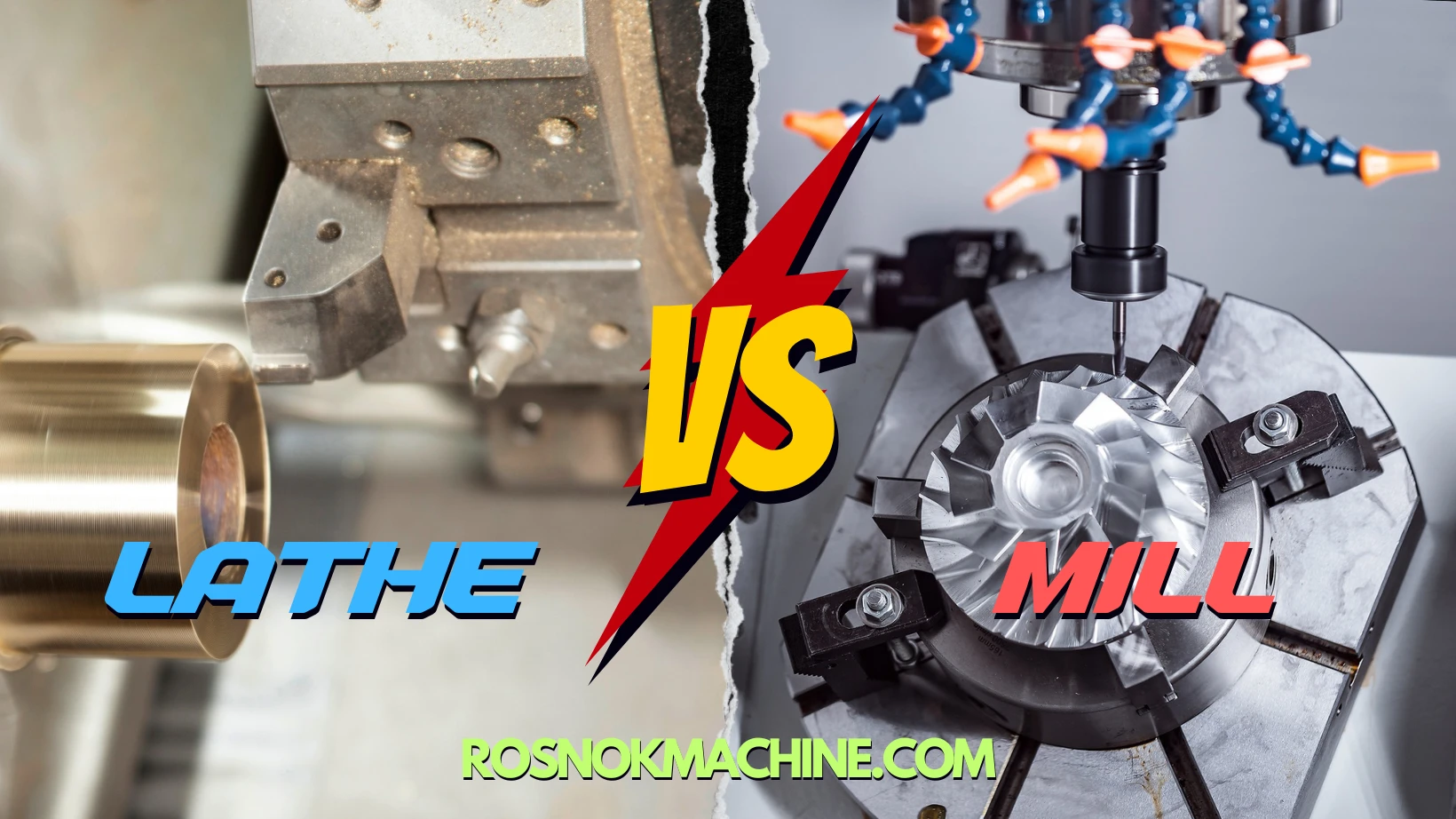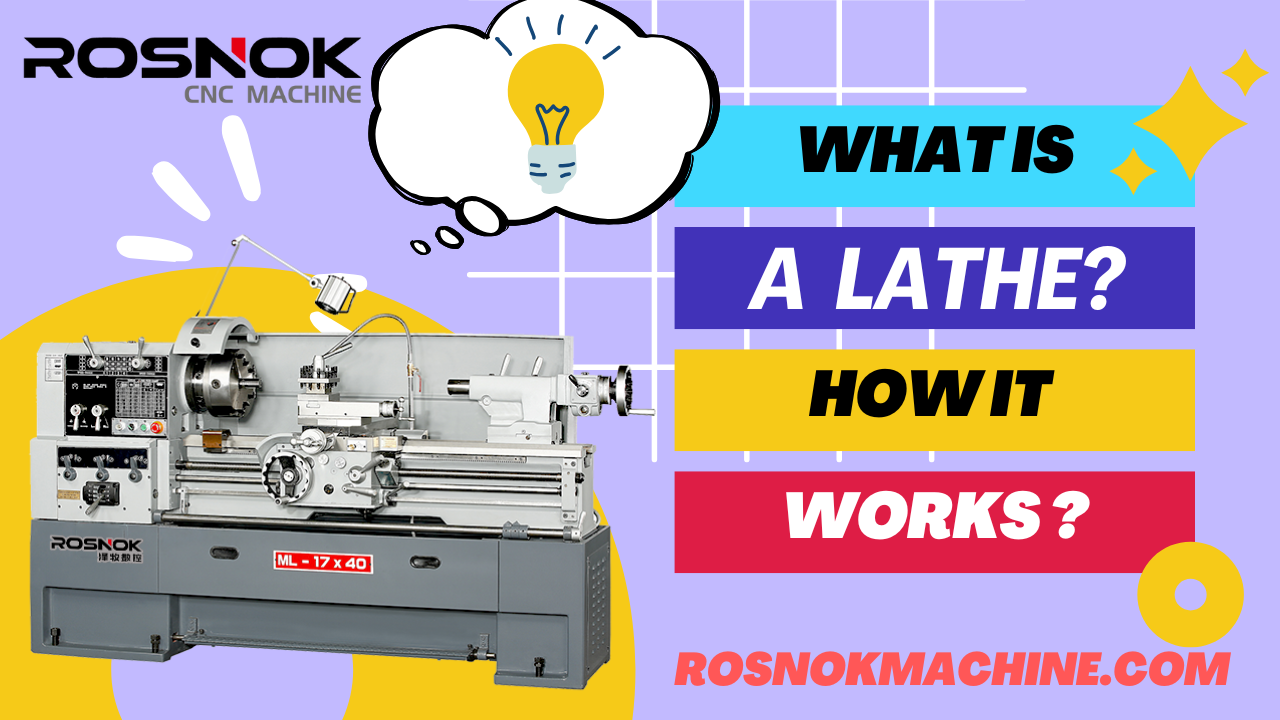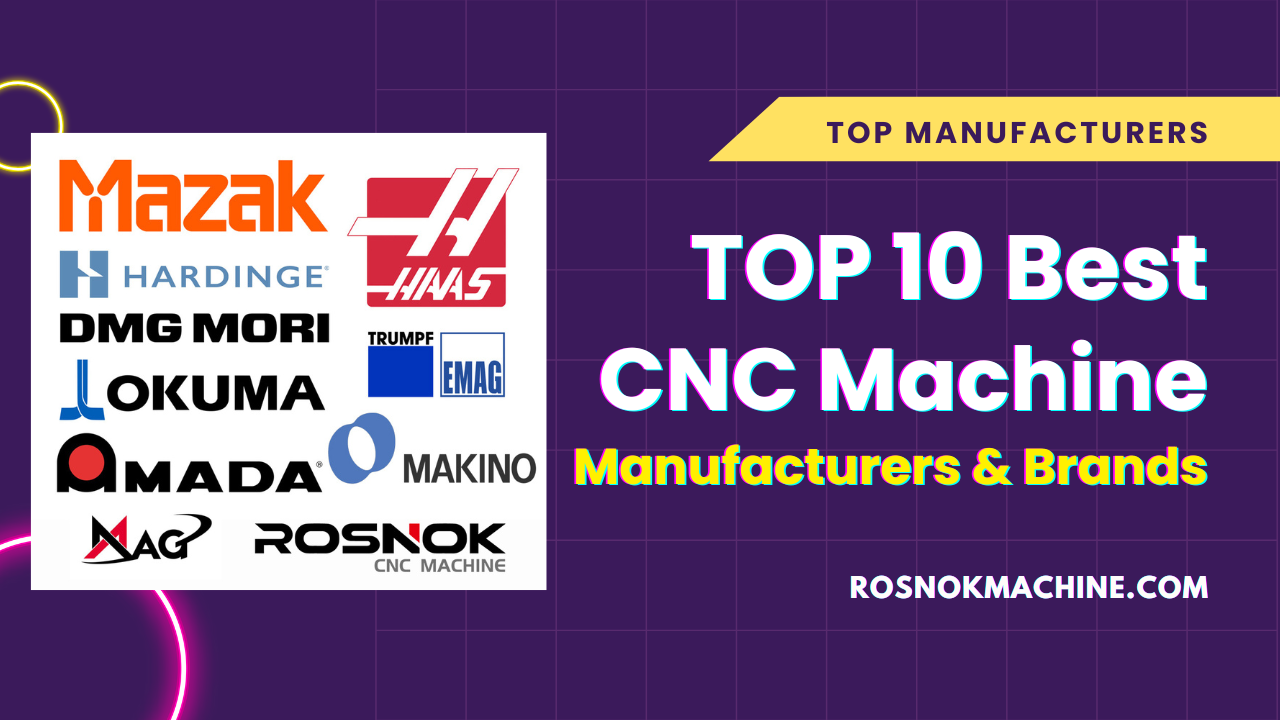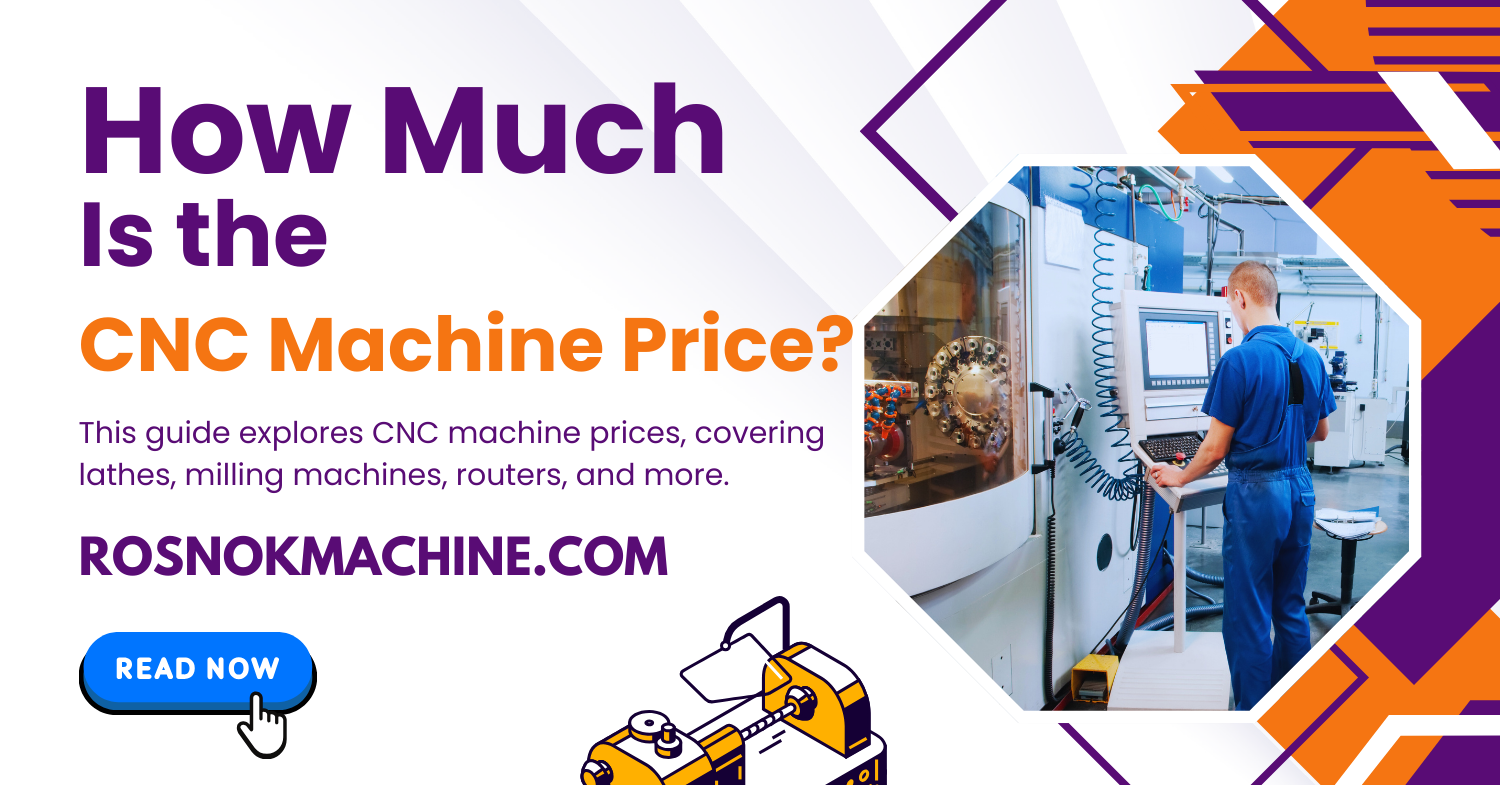Are you struggling to understand CNC machine programming? Does writing and editing CNC code feel overwhelming? Whether you’re a beginner or looking to refine your skills, learning CNC machine programming is essential for achieving precision machining. Without proper knowledge, programming errors can lead to costly mistakes, wasted materials, and machine downtime. But don’t worry—mastering CNC programming doesn’t have to be difficult! With the right approach, you can program a CNC machine confidently and efficiently.
CNC machine programming is the process of writing instructions (G-code and M-code) that control CNC machines for precise cutting, drilling, and shaping. It enables machines to follow exact coordinates and toolpaths, producing high-quality components. Whether programmed manually or with CAM software, mastering CNC programming ensures efficiency, accuracy, and repeatability in machining.
In this guide, we’ll walk you through the fundamentals of CNC machine programming, from basic commands to advanced automation techniques. Whether you’re working with a CNC lathe, milling machine, or laser cutter, you’ll gain the skills to write, edit, and optimize CNC programs for high-performance machining. Get ready to unlock the full potential of CNC programming!
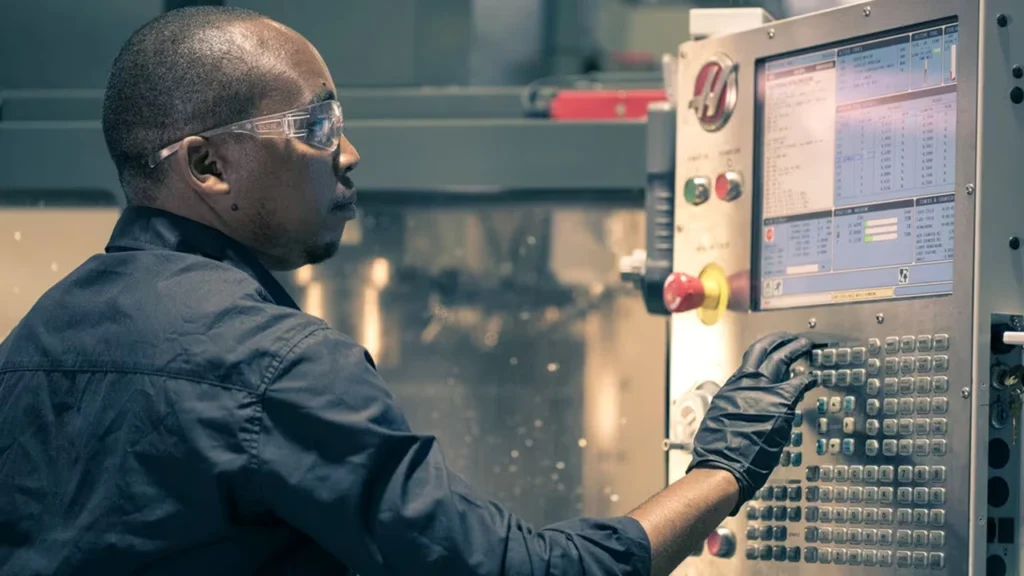
Introduction: What Is CNC Machine Programming?
In modern manufacturing, CNC machine programming is essential for automating machining operations with high precision and repeatability. Unlike manual machining, where operators control each movement, CNC programming enables machines to independently manage tool positioning, spindle speeds, feed rates, tool changes, and other vital machining parameters. This level of automation ensures consistent quality, increased efficiency, and reduced human error, making CNC programming a fundamental skill for machinists and manufacturers.
Before diving into the technical aspects of CNC machine programming, it’s important to establish a strong foundation in how CNC programs work, why they matter, and how they impact machining accuracy and efficiency.
What Is CNC Machine Programming?
CNC machine programming is the process of creating machine-readable instructions that control CNC machines in cutting, drilling, milling, and shaping materials with precision. These instructions dictate tool movement, spindle speed, feed rates, coolant activation, and tool changes, ensuring smooth and efficient machining operations.
Why Is CNC Machine Programming Important?
- Achieves high-precision machining with minimal human error
- Automates complex production tasks, increasing efficiency
- Ensures part consistency and repeatability across large production runs
- Optimizes material usage, reducing waste and operational costs
Example: When a CNC milling machine receives a code program, it precisely follows the programmed toolpaths, spindle speeds, and depth controls to cut, engrave, or shape the material exactly as intended, ensuring high-quality, repeatable results.

How Does CNC Machine Programming Work?
CNC machine programming transforms digital designs into precise machining instructions, enabling CNC machines to execute complex operations with accuracy and efficiency. This process involves multiple steps, from designing the part to executing the machining program.
Key Steps in CNC Machine Programming:
- Design the Part → Create a 2D sketch or 3D model using CAD software.
- Generate Toolpaths → Define how the tool moves along the workpiece using CAM software.
- Convert to code → Translate the design into machine-readable commands that control tool movement, spindle speeds, and cutting sequences.
- Load the Program → Transfer the CNC machine program to the machine’s controller for execution.
- Execute the Job → The CNC machine follows the programmed instructions, precisely cutting, drilling, or shaping the material.
Example: A CNC lathe machine program might include commands that control cutting depth, spindle speed, and tool position, ensuring the machine cuts a cylindrical part with high precision and efficiency.
Summary: The Basics of CNC Machine Programming
| Concept | Purpose |
|---|---|
| Code | Controls tool movement, spindle speed, and machine functions |
| Toolpath Strategy | Defines cutting paths to optimize efficiency and precision |
| Work Coordinate System (WCS) | Establishes reference points for accurate machining |
| CNC Programming Software | Translates CAD designs into executable CNC machine code |
Mastering these core principles of CNC machine programming ensures high precision, efficiency, and repeatability in machining operations. A strong understanding of code, toolpaths, and CNC software is essential for optimizing production and reducing errors in modern manufacturing.
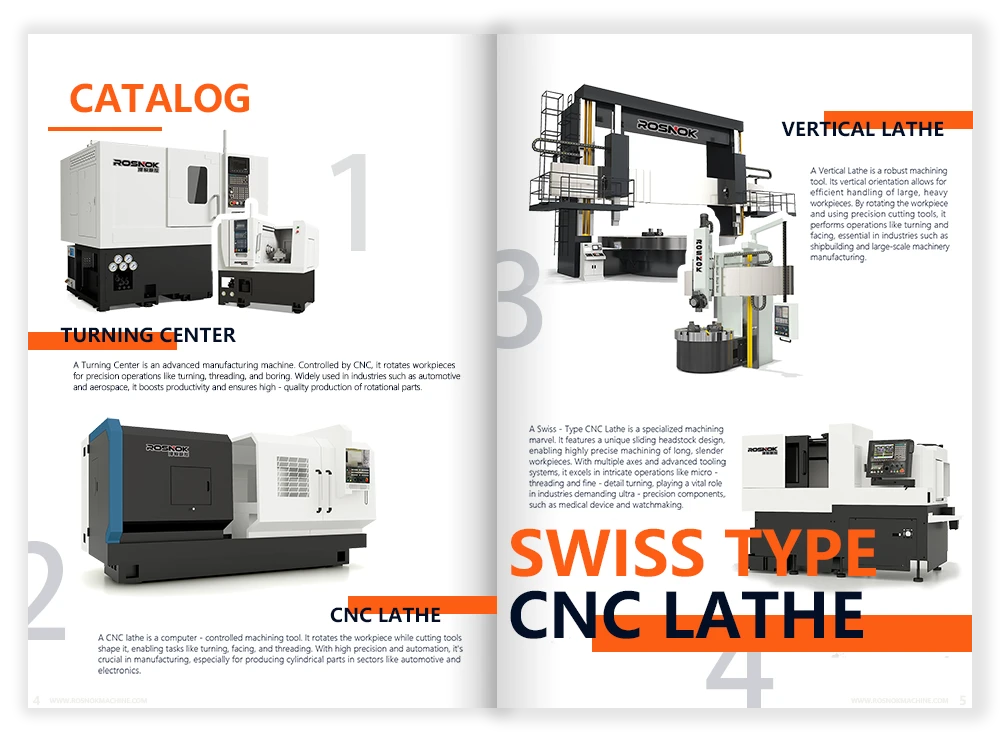
Basics of CNC Machine Programming
CNC machine programming forms the foundation of automated machining, allowing machines to follow precise instructions without manual intervention. Understanding how CNC machines are programmed, the key concepts involved, and the role of software is essential for beginners.
Core Principles of CNC Machine Programming
CNC programming is based on a structured set of instructions that control how a machine moves, cuts, and processes materials. These instructions define the path, speed, depth, and operation sequence to create a finished part.
Key Principles:
- Automated Execution – Machines follow pre-set instructions for consistent results.
- Precision Control – Programs dictate exact tool positioning and movement.
- Repeatability – CNC machines can reproduce identical parts with high accuracy.
- Efficiency & Speed – Programming reduces human errors and optimizes machining time.
Example: Imagine needing 100 identical metal brackets. Instead of manually cutting each one, a CNC machine executes the same program repeatedly, ensuring consistent dimensions and quality.
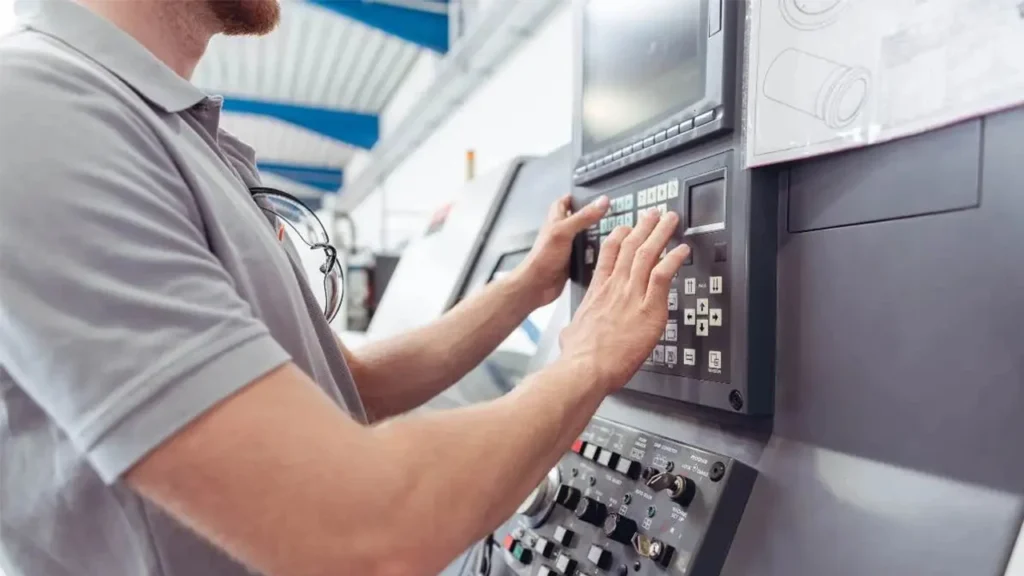
Key Elements of CNC Programming
CNC machine programming relies on several core elements that define machining operations and ensure smooth execution.
Essential Components:
- Toolpath Strategy – Determines how the cutting tool moves through the material.
- Spindle Speed & Feed Rate – Controls cutting efficiency and surface finish.
- Work Coordinate System (WCS) – Establishes a fixed reference point for the machine.
- Cutting Sequences – Programs define when and how different tools engage with the workpiece.
Example: If you’re engraving a logo onto an aluminum plate, the CNC program will ensure the tool moves precisely over the design area, maintaining the correct depth and speed for a smooth finish.
CNC Programming Software: Simplifying the Process
CNC machine programming can be done manually or with the help of software. Today, many manufacturers use CNC programming software to simplify the process and reduce errors.
Types of CNC Programming Software:
- CAM Software (Fusion 360, Mastercam, SolidCAM) – Converts CAD designs into CNC-ready programs.
- Conversational CNC Programming – Allows beginners to input machining steps without writing raw code.
- Simulation Software – Runs programs virtually to detect errors before machining.
Summary: Getting Started with CNC Machine Programming
| Concept | What It Does |
|---|---|
| Toolpath Strategy | Defines cutting paths for efficiency & precision |
| Spindle Speed & Feed Rate | Controls cutting speed & depth |
| Work Coordinate System | Sets reference points for accuracy |
| CNC Programming Software | Converts designs into CNC machine instructions |
Mastering CNC machine programming starts with understanding these fundamental concepts. With the right tools and guidance, beginners can start programming CNC machines with confidence and unlock the potential of automated manufacturing.
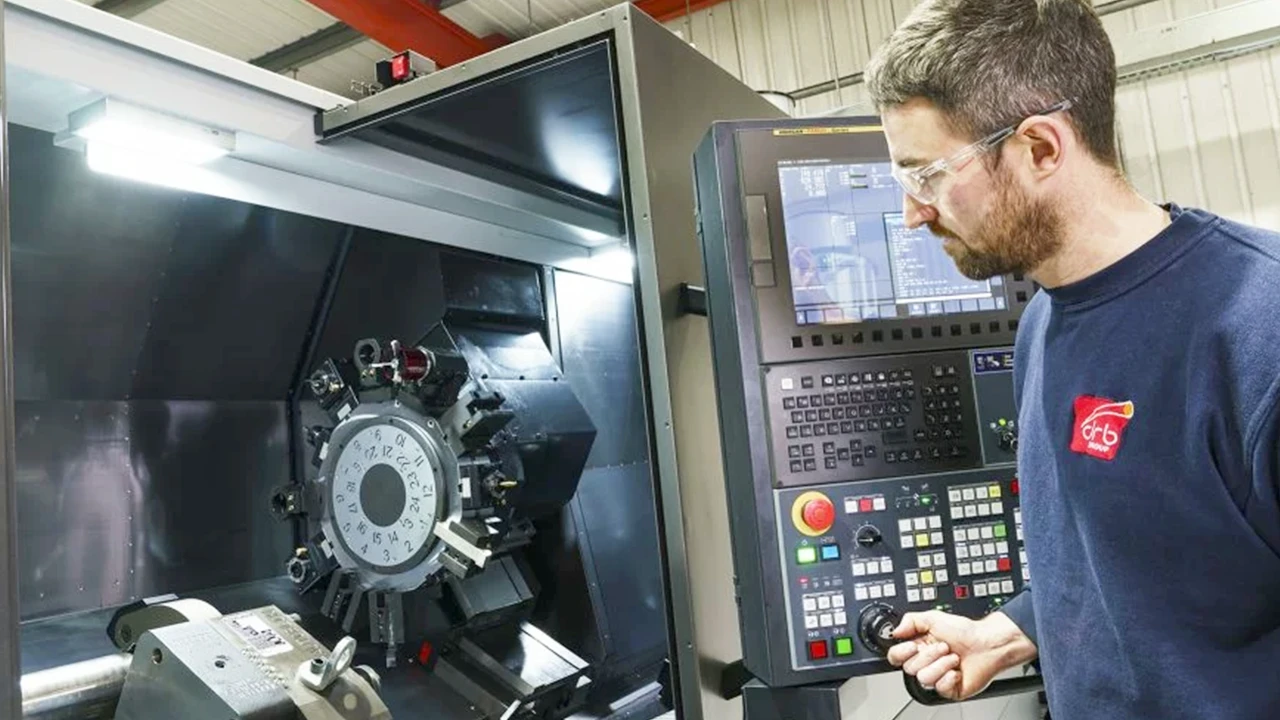
How to Program a CNC Machine?
CNC machine programming can be done in different ways, depending on the complexity of the part, the type of CNC machine, and the skill level of the programmer. Beginners often start with conversational programming before moving to manual Code writing or CAM software-based programming for more complex operations.
Each method has its own advantages and is suited for different applications. Let’s explore the three main types of CNC machine programming and how they are used in modern machining.
1. Manual CNC Programming (Text-Based Commands & Control Codes)
Manual CNC programming involves writing machine-readable instructions using G-code, M-code, and other control codes (such as D, F, S, T, and N codes) to control tool movement, spindle speed, feed rates, and machining sequences. This method gives programmers full control over CNC operations, allowing them to customize every aspect of machining for maximum precision and efficiency.
When to Use Manual CNC Programming:
- Ideal for simple machining tasks like drilling, cutting, and basic milling.
- Used when fine-tuning a program for maximum precision.
- Essential for understanding how CNC machines execute commands.
Challenges:
- Time-consuming and requires programming knowledge.
- More prone to human errors if not coded correctly.
2. Conversational CNC Programming (Beginner-Friendly Approach)
Conversational programming allows operators to input machining steps using a simplified, menu-driven interface, without needing to write raw code. This method is built into many modern CNC machine controllers and is useful for quickly generating programs for basic parts.
Advantages of Conversational Programming:
- Beginner-friendly – No coding experience required.
- Fast setup – Reduces programming time for simple operations.
- Built into many CNC controllers – No additional software needed.
Limitations:
- Not suitable for complex machining operations.
- Less flexibility compared to manual or CAM programming.
Example: An operator using a Haas or Fanuc CNC controller can enter machining parameters (e.g., hole size, depth, and tool type) into a simple interface, and the machine generates the necessary program automatically.
3. CAM Software-Based CNC Programming (Computer-Aided Manufacturing)
CAM-based CNC programming is the most efficient and widely used method in modern machining. It allows programmers to design parts in CAD (Computer-Aided Design) software and automatically generate optimized toolpaths using CAM software. This eliminates the need for manual code writing and reduces programming errors.
Why Use CAM Software for CNC Machine Programming?
- Great for complex parts – Ideal for 3D machining and multi-axis operations.
- Time-saving – Automates toolpath generation and reduces errors.
- Simulation capabilities – Allows testing programs before running them on the machine.
Challenges:
- Requires powerful software (Fusion 360, Mastercam, SolidCAM, etc.).
- Higher learning curve compared to conversational programming.
Example: A programmer designing a complex aerospace component can use CAM software to generate toolpaths automatically, ensuring optimal cutting efficiency and precision without needing to manually write each line of code.

Summary: Choosing the Right CNC Programming Method
| Programming Type | Best For | Skill Level |
|---|---|---|
| Manual Programming (code) | Simple parts, precision machining | Advanced |
| Conversational Programming | Quick setup, basic parts | Beginner |
| CAM Software Programming | Complex designs, automation | Intermediate/Advanced |
Beginners often start with conversational CNC programming, then progress to manual G-code writing to understand the fundamentals. For advanced machining and automation, CAM-based CNC programming is the most powerful and efficient approach.
CNC Machine Programming Languages
CNC machines use a variety of programming codes to control tool movement, spindle speed, feed rate, tool selection, and other machine functions. G-code and M-code are the most widely known, but many other codes help define machining operations. Understanding these codes is essential for writing efficient and precise CNC programs.
G-Code and M-Code: The Core of CNC Machine Programming
G-code (Geometric Code) is the most common CNC programming language, primarily used to control tool movement and positioning.
Key Functions of G-Code:
- Defines toolpaths, movement speed, and cutting sequences.
- Controls linear and circular interpolation (straight and curved cutting paths).
- Sets work coordinate systems and cutting depths.
Example G-code Commands:
G00– Rapid positioning (fast movement to a specific location).G01– Linear feed motion (moves the tool in a straight line at a controlled speed).G02/G03– Circular interpolation (defines arcs and circles).G28– Moves the machine back to the home position.
M-code (Miscellaneous Code) is used to control non-movement-related machine functions.
Key Functions of M-Code:
- Controls spindle start/stop and rotational direction.
- Manages coolant activation and deactivation.
- Commands tool changes and program end signals.
Example M-code Commands:
M03– Spindle ON (clockwise rotation).M05– Spindle OFF.M08/M09– Coolant ON/OFF.M30– Program end and reset.
Why Are G-Code and M-Code Important?
These codes provide direct control over CNC machines, ensuring precise movement and execution of machining operations. However, manual CNC programming also includes many other codes that control additional machining parameters.
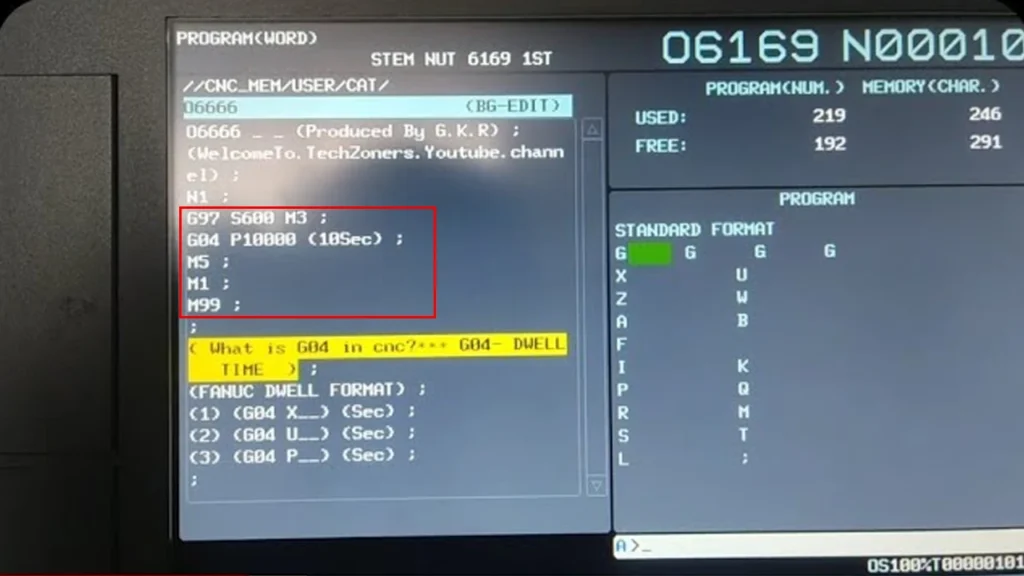
Additional CNC Programming Codes Explained
In addition to G-code and M-code, CNC programming uses various alphanumeric codes to define different machining parameters.
| Code Type | Function | Example |
|---|---|---|
| D-Code (Diameter Offset) | Defines tool offset from the center line | D01 (Offset for tool #1) |
| F-Code (Feed Rate) | Sets the tool feed rate (speed of movement) | F200 (200 mm/min feed rate) |
| N-Code (Line Numbering) | Organizes program line sequences | N10 G01 X50 Y25 |
| S-Code (Spindle Speed) | Controls spindle rotations per minute (RPM) | S1200 (Set spindle to 1200 RPM) |
| T-Code (Tool Selection) | Chooses the tool for machining | T02 M06 (Select tool #2 and change tool) |
Why Are These Codes Important?
These additional codes fine-tune the machining process, allowing better control over feed rates, tool offsets, spindle speeds, and tool changes, ensuring efficient and accurate machining.
Other CNC Machine Programming Languages
While G-code is the most common, some CNC machines use alternative programming languages based on their controller brands.
Alternative CNC Programming Languages:
| Programming Language | Used In | Key Features |
|---|---|---|
| Siemens (SINUMERIK) | Siemens CNC controllers | More user-friendly than G-code, uses cycle-based commands. |
| Heidenhain | High-end milling and grinding machines | Uses plain-text conversational programming for easier programming. |
| Mazatrol | Mazak CNC machines | Allows for graphical part programming without raw G-code. |
| FANUC Macro B | FANUC controllers | Supports customized macros and automation functions. |
Why Do Some CNC Machines Use Alternative Languages?
Some controllers use their own simplified programming formats, making CNC programming faster and easier for operators who don’t want to write G-code manually. However, G-code remains the industry standard, and learning it provides a strong foundation for working with any CNC machine.

Summary: CNC Programming Languages & Code Types
| Code Type / Language | Purpose |
|---|---|
| G-code | Defines tool movement & positioning |
| M-code | Controls auxiliary machine functions (spindle, coolant, etc.) |
| D-code | Sets tool offset from the center line |
| F-code | Determines feed rate (speed of tool movement) |
| S-code | Controls spindle speed (RPM) |
| T-code | Selects and changes tools |
| N-code | Organizes program lines (not needed in CAM-based programming) |
| Siemens, Heidenhain, Mazatrol | Alternative CNC programming languages based on controller brands |
Understanding CNC programming languages and codes allows machinists and engineers to fully control machining operations, whether they are writing programs manually or using software-generated code.
CNC Programming for Different Machine Types
CNC machine programming varies depending on the type of machine being used. While the fundamental principles remain the same, the specific programming methods and codes differ for lathes, milling machines, laser cutters, routers, and other CNC equipment. Each machine type has its own requirements for tool movement, cutting operations, and material handling, making it essential to understand how programming adapts to different CNC applications.
CNC Lathe Machine Programming
CNC lathe programming primarily focuses on turning operations, where the workpiece rotates while a stationary tool removes material. This process is widely used in shaft manufacturing, cylindrical components, and thread cutting.
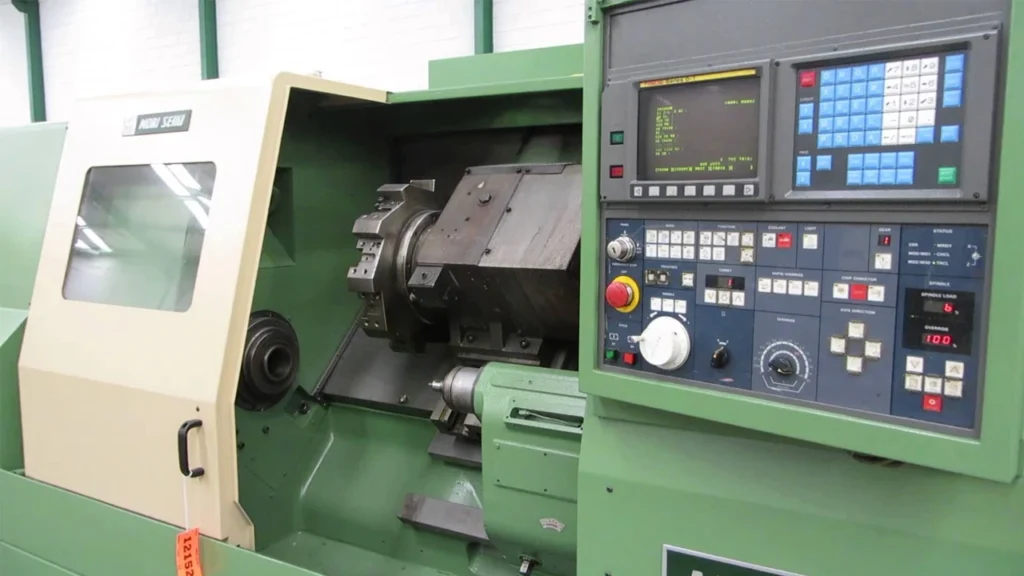
Key Features of CNC Lathe Programming:
Uses precise tool movements along the X and Z axes to shape cylindrical parts.
Controls spindle speed and feed rate to optimize cutting efficiency.
Involves tool offsets to adjust for tool wear and ensure consistent cutting.
How Does the Tool Move in CNC Lathe Programming?
- Linear interpolation (Straight-line cutting): The tool moves in a straight line from one point to another. This is used for cutting flat surfaces, external diameters, and simple grooves.
- Circular interpolation (Curved cutting): The tool moves along a curved path to create rounded corners, arcs, and fillets on the workpiece. This is essential for machining rounded features like bearing surfaces or decorative contours.
Example:
Imagine you’re programming a CNC lathe to cut a cylindrical shaft with a curved groove:
- Linear interpolation moves the tool straight along the workpiece, cutting a uniform diameter.
- Circular interpolation allows the tool to create a smooth, curved transition between different diameters.
Understanding linear and circular interpolation is crucial for controlling how the cutting tool shapes a rotating workpiece, ensuring accuracy and smooth finishes in CNC lathe machining.
CNC Milling Machine Programming
CNC milling machines are among the most versatile and widely used CNC machines, capable of performing slotting, drilling, contouring, and surface machining. Unlike CNC lathes, where the workpiece rotates, in CNC milling, the cutting tool spins while the workpiece remains stationary. The tool moves in multiple directions to precisely cut materials into complex shapes.
Key Features of CNC Milling Machine Programming:
- Uses multi-axis movement (X, Y, Z) for precise shaping.
- Supports 2D, 3D, and multi-axis machining operations.
- Can perform face milling, pocket milling, contouring, and hole drilling.

How Do Tools Move in CNC Milling Machine Programming?
CNC milling machines follow different movement strategies depending on the type of machining operation.
Linear Interpolation (Straight Cuts in Any Direction)
- Tool moves in a straight line along the X, Y, or Z axis.
- Used for slotting, surface milling, and edge cutting.
- Helps create precise rectangular and straight-edged components.
Example: If a machinist needs to mill a flat pocket into a metal plate, the CNC program moves the tool straight in the X and Y directions to remove material in a precise pattern.
Circular Interpolation (Arcs & Rounded Features)
- Used to create rounded edges, circular holes, and complex contours.
- Clockwise circular motion (G02) or counterclockwise circular motion (G03) is programmed based on design needs.
Example: If a round pocket needs to be milled into a part, the program will use circular interpolation to cut the material layer by layer, forming a perfect circular shape.
3D Milling & Multi-Axis Machining
- In 3-axis CNC milling, the tool moves up and down (Z-axis) while simultaneously cutting along the X and Y axes.
- 4-axis and 5-axis CNC milling introduce rotational movements, allowing the tool to cut from multiple angles without repositioning the part.
- This is used for complex surfaces, molds, and aerospace components.
Example: A 5-axis CNC milling machine can machine a turbine blade in a single setup by continuously adjusting tool angles to maintain an optimal cutting position.
CNC Laser Cutting & Engraving Machine Programming
CNC laser cutting machines use a high-powered laser beam instead of a physical cutting tool. These machines are ideal for precision cutting, engraving, and marking on materials such as metal, wood, acrylic, and plastic.

Key Features of CNC Laser Cutting Programming:
Uses vector-based cutting paths generated from CAD files.
Controls laser power, speed, and focus depth for different materials.
Supports engraving, marking, and full-depth cutting operations.
How Does a CNC Laser Cutting Machine Follow Its Program?
Vector-Based Cutting Paths
- Instead of using tool movements, laser cutters follow precise vector paths generated from CAD software.
- These paths define where the laser beam should cut, engrave, or mark the material.
Example: A designer creating custom metal signage can upload a DXF or SVG file, which the laser cutter follows to trace and cut out letters or intricate patterns.
Power & Speed Adjustments
- Unlike milling machines that use spindle speeds and feed rates, laser machines adjust laser power intensity and cutting speed.
- Lower power is used for engraving, while higher power is used for full-depth cutting.
Example: To engrave a logo on stainless steel, a CNC laser machine will use low power and a controlled beam to create a detailed, permanent mark without cutting through the material.
CNC Router Machine Programming
CNC routers are specialized for cutting wood, plastic, and lightweight metals, commonly used in furniture making, sign making, and 3D carving.
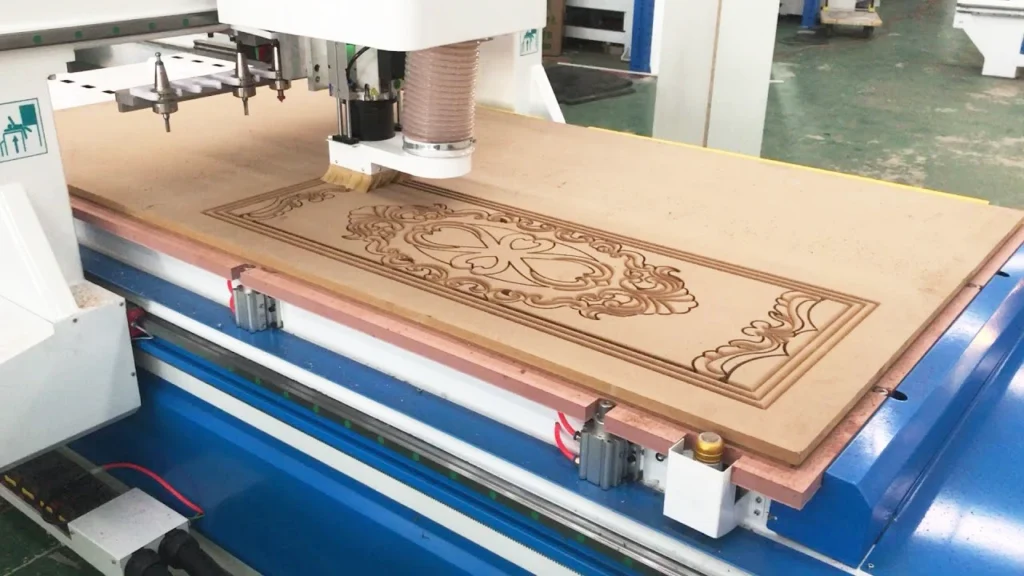
Key Features of CNC Router Programming:
Uses 2D and 3D toolpath generation for carving and contouring.
Requires spindle speed adjustments to prevent burning.
Often includes multi-pass cutting to gradually remove material.
How CNC Routers Move During Programming
Contour Cutting (Following a Shape Outline)
- Used for cutting letters, shapes, and signs from flat materials.
- The router follows a predefined path in the X and Y directions.
Example: A CNC router cutting out a custom wooden sign will move its spindle along the lettering outline, ensuring clean, precise edges.
3D Carving & Relief Cutting
- Used for engraving detailed woodwork, artistic sculptures, or furniture panels.
- The tool follows gradual depth changes in the Z-axis to create depth variations.
Example: A CNC router carving an intricate floral pattern into a cabinet door will use multi-depth cutting passes to achieve the desired depth and detail.
CNC Grinding & Drilling Machine Programming
CNC grinding and drilling machines perform specialized finishing and hole-making operations.

Key Features of CNC Grinding & Drilling Programming:
CNC grinding is used for surface finishing and fine-tolerance parts.
CNC drilling ensures high-precision hole placement with controlled depth.
CNC Grinding Machine Programming
Controlled Passes for Fine Finishing
- CNC grinding machines use programmed tool passes to gradually refine the material surface.
- These movements are highly precise, ensuring perfectly smooth finishes.
Example: A CNC grinding machine used in automotive or aerospace applications will remove tiny layers of metal at a time, ensuring micron-level accuracy.
CNC Drilling Machine Programming
Peck Drilling Cycles for Deep Holes
- CNC drilling machines use peck drilling, where the drill retracts slightly after every cut to remove chips and prevent overheating.
Example: A deep hole in a metal part requires a CNC program to perform multiple peck drilling steps, preventing tool breakage and ensuring precise hole depth.
Summary: Programming Techniques for Different CNC Machines
| CNC Machine Type | Programming Focus | Common Applications |
|---|---|---|
| CNC Lathe | Linear & circular interpolation for turning & threading | Shafts, cylinders, screws |
| CNC Milling | Multi-axis toolpath control for 2D & 3D machining | Molds, frames, aerospace parts |
| CNC Laser Cutter | Vector-based cutting paths & laser power control | Sign-making, metal cutting, engraving |
| CNC Router | High-speed material removal & 3D carving | Woodworking, cabinetry, sign-making |
| CNC Grinder & Driller | Controlled finishing & precision hole-making | Aerospace, automotive, tooling |
Each CNC machine type requires specific programming strategies to optimize efficiency, accuracy, and material usage. Understanding these machine-specific techniques helps machinists and engineers create precise, high-quality parts while maximizing productivity.
How to Write a CNC Machine Program (Step-by-Step Guide)
Writing a CNC machine program may seem complex at first, but by following a structured approach, you can create precise, efficient machining instructions. Whether you’re using a CNC lathe, milling machine, router, or laser cutter, the process involves defining toolpaths, speeds, and cutting operations to transform a digital design into a finished product.
In this guide, we’ll break down the CNC machine programming process into clear, easy-to-follow steps.
Step 1: Set Work Coordinates & Tool Offsets
Before programming a CNC machine, you must set up work coordinates and tool offsets so the machine knows where the workpiece is positioned and how tools will interact with it.
Key Setup Steps in CNC Machine Programming:
- Work Coordinate System (WCS) – Establishes the zero point for all tool movements.
- Tool Offsets – Adjusts for the exact position and length of each cutting tool.
- Fixture Offsets – Ensures proper material alignment for precise machining.
Example: If you’re programming a CNC milling machine, the WCS zero point must be set at the corner of the metal block, ensuring the tool moves relative to the correct starting position.

Step 2: Choose the Right CNC Machine Programming Method
There are three common methods for CNC machine programming, each suited for different skill levels and machining tasks.
- Manual G-Code & M-Code Programming – Best for simple CNC lathe machine programming and basic CNC milling operations.
- Conversational CNC Programming – Ideal for beginners who want to program CNC machines without manually writing code.
- CAM Software for CNC Machine Programming – Used for complex parts requiring automated toolpath generation.
Tip: Beginners often start with conversational CNC machine programming before progressing to manual G-code writing and CAM-based programming.

Step 3: Define Machining Operations in CNC Machine Programming
Each CNC machine program must specify machining operations based on the material, tool type, and machine capabilities.
Common CNC Machining Operations:
- Turning & Threading – Used in CNC lathe machine programming for cylindrical parts.
- Milling & Contouring – Essential for CNC milling machine programming to cut complex shapes.
- Drilling & Tapping – Programs the CNC machine to create accurate holes.
- Engraving & Laser Cutting – Used in CNC router machine programming and CNC laser cutting machine programming.
Example: A machinist using CNC lathe machine programming may first define a facing operation, then program outer diameter cutting, and finally add threading operations for a finished shaft.

Step 4: Generate the CNC Machine Program Code
A CNC machine program consists of step-by-step machine-readable instructions that control the toolpath, spindle speed, feed rate, and machining functions.
Essential CNC Machine Programming Commands:
- G-code for Movement Control –
G00(rapid positioning),G01(linear cutting),G02/G03(circular interpolation). - M-code for Machine Functions –
M03(spindle ON),M08(coolant ON),M30(program end). - S-code & F-code – Define spindle speed (S) and feed rate (F).
- T-code for Tool Selection – Ensures the right cutting tool is used in CNC machine programming.
Example: A CNC milling machine program might begin with a G00 command to position the tool, followed by G01 for a controlled cutting movement, and M06 to change the tool.
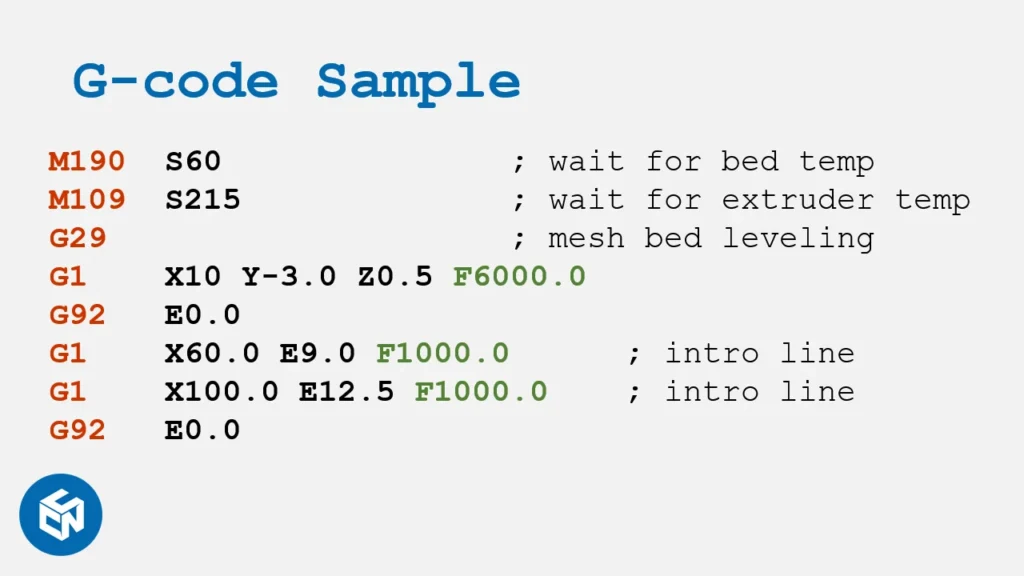
Step 5: Simulate & Test the CNC Machine Program
Before running a CNC machine program, it’s crucial to simulate the toolpath to identify any potential errors or collisions.
Why Simulation is Important in CNC Machine Programming?
- Prevents machine crashes & tool breakage.
- Ensures optimal feed rates & cutting speeds.
- Verifies spindle rotation direction and tool engagement.
Example: Using CNC machine programming software like Fusion 360 or Mastercam, a machinist can run a simulation to check for mistakes before sending the program to the CNC machine.

Step 6: Load & Execute the CNC Machine Program
Once the program is verified, it’s time to load it into the CNC machine and start machining.
Final Steps in CNC Machine Programming Execution:
- Double-check workpiece and tool alignment.
- Verify spindle speed and feed rate settings.
- Run a test piece before machining the final part.
Tip: Start with low feed rates and monitor tool movement before increasing the speed to ensure the CNC machine program runs smoothly.
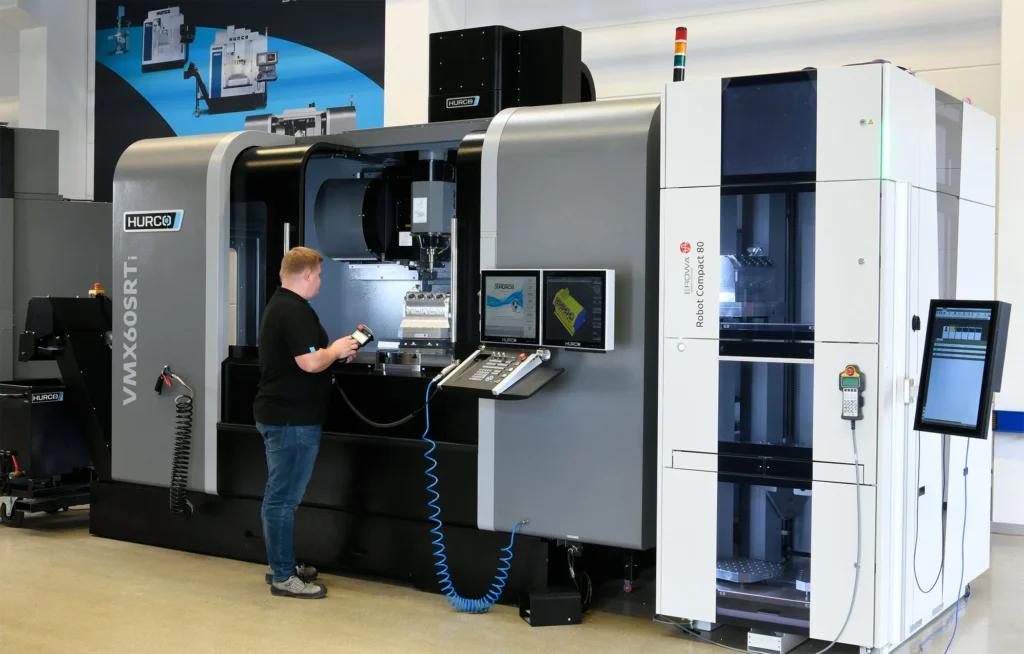
Summary: Step-by-Step CNC Machine Programming Process
| Step | CNC Machine Programming Action |
|---|---|
| 1 | Set work coordinates & tool offsets in the CNC machine |
| 2 | Select a CNC machine programming method (Manual, Conversational, or CAM) |
| 3 | Define machining operations (Turning, Milling, Drilling, Engraving) |
| 4 | Generate CNC machine program code (G-code, M-code, S, F, T commands) |
| 5 | Simulate & verify the CNC machine program for accuracy |
| 6 | Load the CNC machine program and execute the machining process |
By following this structured approach, you can create precise, efficient CNC machine programs for CNC lathe machine programming, CNC milling machine programming, and CNC router machine programming. Whether you’re programming a CNC drilling machine or a CNC laser cutting machine, mastering CNC machine programming is key to achieving high-quality results with minimal errors.
Best CNC Machine Programming Software for Beginners
Choosing the right CNC machine programming software is essential for beginners to simplify programming, improve accuracy, and optimize machining efficiency. Whether you’re learning manual G-code programming, conversational CNC programming, or CAM-based CNC machine programming, software tools can make the process easier and more efficient.
In this section, we’ll explore the best CNC machine programming software for beginners and highlight their key features.
What to Look for in CNC Machine Programming Software?
When selecting CNC programming software, beginners should consider the following:
- User-Friendly Interface – The software should be easy to navigate with clear toolpath visualization.
- G-Code Generation – Must support automatic and manual CNC machine programming.
- Machine Compatibility – Should work with CNC lathe machine programming, CNC milling machine programming, and CNC router programming.
- Simulation & Error Detection – Helps prevent machine crashes and programming mistakes.
- CAD/CAM Integration – Allows seamless conversion of design files into CNC machine programs.
Example: A beginner working on CNC milling machine programming may prefer CAM-based software that automatically generates toolpaths from a CAD model instead of writing G-code manually.
Top CNC Machine Programming Software for Beginners
Here are some of the best CNC programming software options for beginners, categorized by manual programming, conversational programming, and CAM-based software.
Best Software for Manual G-Code Programming
For those who want to learn CNC machine programming manually, these software options provide an excellent environment for writing, editing, and testing G-code.
| Software | Features | Best For |
|---|---|---|
| NC Viewer | G-code editing, visualization, and simulation | CNC lathe & milling beginners |
| CNC Simulator Pro | 3D simulation, real-time error detection | Learning manual programming |
| G-Wizard Editor | G-code optimization, syntax checking | Improving G-code efficiency |
Why Use Manual Programming Software?
- Helps understand CNC machine programming structure.
- Allows editing and troubleshooting G-code manually.
- Supports G-code testing before running programs on real machines.

Best Software for Conversational CNC Programming
For beginners who want a simple, code-free approach to CNC machine programming, conversational software allows users to input machining steps without writing G-code.
| Software | Features | Best For |
|---|---|---|
| PathPilot (Tormach) | Built-in conversational CNC programming | CNC milling machine programming |
| Mazatrol (Mazak Machines) | Graphical interface, no G-code needed | CNC lathe & multi-axis machining |
| Siemens ShopMill & ShopTurn | Simple menu-driven programming | CNC turning & milling operations |
Why Use Conversational Programming Software?
- Eliminates the need to learn complex G-code syntax.
- Faster programming for simple machining tasks.
- Ideal for hobbyists, beginners, and small workshops.
Best CAM Software for CNC Machine Programming
CAM software is widely used for automating CNC machine programming. Instead of writing G-code manually, users can generate toolpaths automatically from CAD models.
| Software | Features | Best For |
|---|---|---|
| Fusion 360 | Full CAD/CAM integration, cloud-based | CNC milling & turning |
| Mastercam | Advanced toolpath control, simulation | Professional CNC machining |
| VCarve Pro | Optimized for CNC routers & wood carving | CNC router programming |
Why Use CAM Software for CNC Machine Programming?
- Converts 3D models into optimized toolpaths.
- Provides simulation & real-time error detection.
- Supports complex multi-axis CNC machine programming.
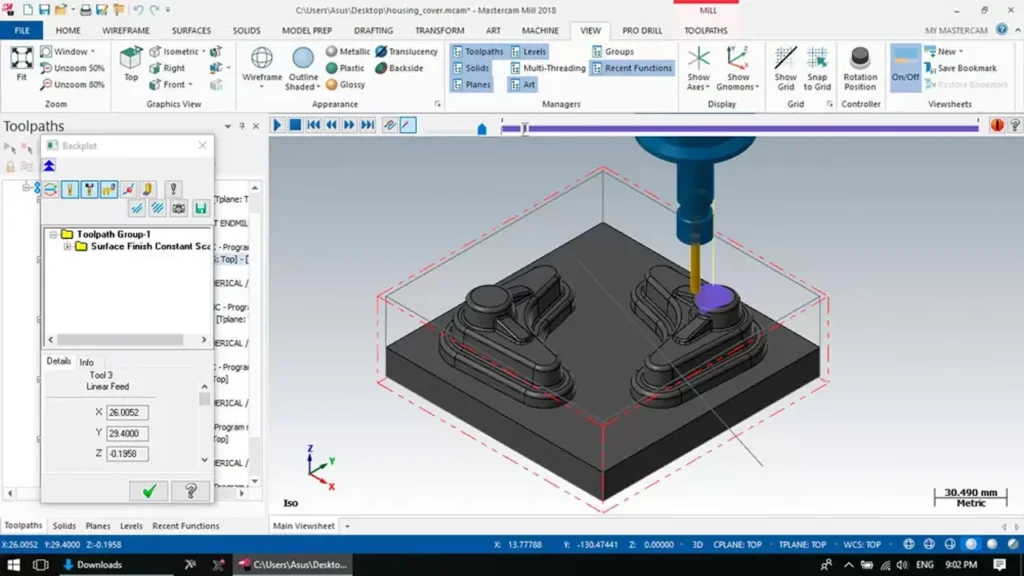
Choosing the Right CNC Machine Programming Software
| Programming Style | Best Software Type | Example Software |
|---|---|---|
| Manual G-Code Writing | G-code Editors & Simulators | NC Viewer, G-Wizard Editor |
| Conversational CNC Programming | Code-Free Input Systems | PathPilot, Mazatrol |
| CAM-Based Programming | Automatic Toolpath Generators | Fusion 360, Mastercam |
Beginners should start with a software type that matches their learning goals. Those who want to master manual CNC machine programming should choose G-code simulators, while those who prefer automation should opt for CAM software.
Common CNC Programming Mistakes & How to Avoid Them
Even experienced machinists can make mistakes in CNC machine programming, leading to machine crashes, tool breakage, material waste, and production delays. Understanding common errors and knowing how to avoid them will improve machining efficiency, reduce costs, and prevent downtime.
In this section, we’ll highlight the most frequent CNC programming mistakes and how to fix them before running a program.
1. Incorrect Work Coordinate System (WCS) & Tool Offsets
The Problem:
- Many CNC machine programming errors occur due to incorrect workpiece zero settings or tool length offsets.
- If the machine doesn’t know the correct starting position, tools can cut too deep, too shallow, or in the wrong location.
Example: A machinist programs a CNC milling machine to start cutting at (0,0,0), but if the work coordinate system (WCS) isn’t properly set, the tool might crash into the workpiece or machine table.
How to Avoid This:
Always verify the work offset (G54, G55, etc.) before running a program.
Check tool length offsets using a touch probe or manual measurement.
Run a dry test (without cutting material) to confirm the correct zero position.

2. Using the Wrong Feed Rate & Spindle Speed
The Problem:
- Incorrect feed rates and spindle speeds can ruin the workpiece or break the cutting tool.
- Too fast = Overheating, tool wear, and poor surface finish.
- Too slow = Unnecessary machining time and material buildup on tools.
Example: A CNC lathe machine program sets spindle speed too low while cutting aluminum, causing chatter and rough finishes.
How to Avoid This:
Use cutting speed formulas based on material type and tool diameter.
Follow manufacturer-recommended speeds and feeds.
Use trial cuts before machining expensive materials.
Tip: CAM software like Fusion 360 and Mastercam can automatically calculate optimal speeds and feeds for different materials.
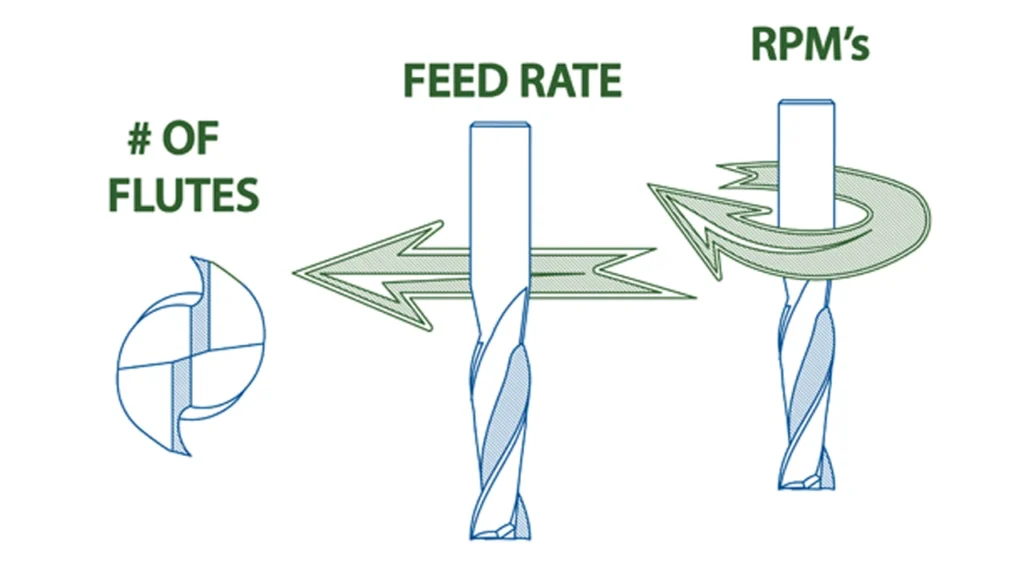
3. Forgetting to Simulate the CNC Machine Program
The Problem:
- Running a CNC program without testing it first can lead to tool crashes and machine damage.
- Missing tool change commands (
M06) or incorrect rapid movements (G00) can cause serious machining errors.
Example: A machinist programs a CNC router machine without checking the toolpath, causing the spindle to move through a clamp holding the workpiece.
How to Avoid This:
- Always run a simulation in CAM software before executing a program.
- Use G-code preview tools like NC Viewer to check movement paths.
- Run a test pass above the workpiece (air cut) before actual machining.

4. Incorrect Tool Selection & Tool Wear Ignorance
The Problem:
- Choosing the wrong tool for the job can lead to poor surface finishes and excessive tool wear.
- Ignoring tool wear results in inconsistent part dimensions and rough edges.
Example: A CNC milling machine program uses an end mill instead of a drill bit to create holes, causing tool deflection and inaccuracies.
How to Avoid This:
- Select the correct tool type, diameter, and material for each machining operation.
- Regularly check tools for wear and replace dull tools.
- Program tool change commands (M06) at appropriate intervals.
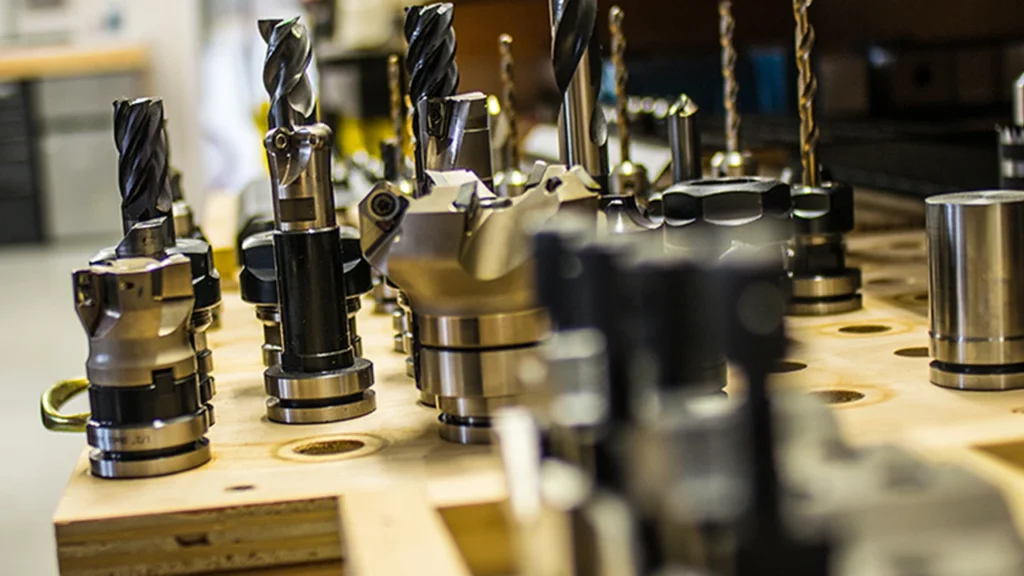
5. Missing or Incorrect Cutter Compensation (G41/G42)
The Problem:
- Cutter compensation allows the machine to adjust for tool diameter offsets.
- If not programmed correctly, the machine might cut inside or outside the intended path, ruining the part.
Example: A machinist cutting an external contour forgets to apply G42 (cutter compensation right), causing the tool to cut into the part instead of following the correct outline.
How to Avoid This:
- Always use G41 (left compensation) or G42 (right compensation) based on the cutting direction.
- Verify tool diameter offsets in the tool table before running the program.
Tip: Modern CAM software automatically calculates tool compensation, reducing manual errors.
6. Overlooking Safe Retract Heights (Z-Axis Movements)
The Problem:
- If the Z-axis retract height is too low, the tool can collide with clamps, fixtures, or the workpiece.
- This can break the tool, damage the part, and misalign the spindle.
Example: A CNC drilling machine program sets G00 Z5 instead of G00 Z50, causing the drill to crash into the material before retracting high enough.
How to Avoid This:
- Set safe retract heights in CAM software or manually adjust G-code (
G28, G53, G43). - Use machine simulation to check all Z-axis movements before running the program.

7. Not Accounting for Material Expansion & Machine Warm-Up
The Problem:
- Some materials expand due to heat generated during cutting, leading to dimensional errors.
- CNC machines also require a warm-up cycle to stabilize spindle and linear guide temperatures.
Example: A CNC milling machine program cutting titanium produces inconsistent hole sizes because thermal expansion wasn’t accounted for.
How to Avoid This:
- Run a machine warm-up cycle before precision machining.
- Allow for thermal expansion in tight-tolerance parts (e.g., aerospace components).
- Use coolants and controlled machining environments for stable results.
Summary: How to Prevent CNC Machine Programming Mistakes
| Mistake | How to Avoid It |
|---|---|
| Incorrect Work Offsets | Always verify WCS (G54, G55) & tool offsets |
| Wrong Feed & Spindle Speed | Use correct formulas & recommended settings |
| Skipping Simulation | Run software simulations before machining |
| Wrong Tool Selection | Choose the right tool for the operation |
| Missing Cutter Compensation | Apply G41/G42 for precise tool paths |
| Low Z-Axis Retract Height | Set safe retract heights to avoid collisions |
| Ignoring Thermal Expansion | Use temperature control & warm-up cycles |
Avoiding these common CNC programming mistakes will improve machining accuracy, reduce material waste, and increase production efficiency. Mastering CNC machine programming requires attention to detail, but with practice, you can consistently produce high-quality parts with precision and reliability.
Advanced CNC Programming Techniques
As you become more proficient in CNC machine programming, you’ll need to explore advanced techniques to increase efficiency, precision, and automation. These methods are essential for high-performance CNC machining, especially in industries like aerospace, medical device manufacturing, and automotive production.
In this section, we’ll dive into multi-axis programming, parametric programming, macro programming, automation, and AI integration to help you take your CNC machine programming skills to the next level.
Multi-Axis CNC Programming (4-Axis & 5-Axis Machining)
What It Is:
- Unlike traditional 3-axis CNC machine programming, multi-axis CNC machining allows for rotation and tilting of the workpiece or tool.
- 4-axis CNC machining introduces a rotary axis (A-axis or B-axis) to cut complex contours.
- 5-axis CNC machining allows full simultaneous movement along X, Y, Z, A, and B axes, enabling the tool to reach challenging angles in a single setup.
Example: A 5-axis CNC milling machine can produce aerospace turbine blades in one operation, reducing the need for multiple setups and increasing precision.
How to Use It in CNC Machine Programming:
- Use CAM software (Fusion 360, Mastercam, SolidCAM) to generate optimized multi-axis toolpaths.
- Adjust work coordinate systems (G54-G59) and rotary movements (G68, G69) for accurate positioning.
- Reduce tool wear by using adaptive toolpaths and dynamic feed control.
Tip: 5-axis CNC machine programming is ideal for medical implants, aerospace parts, and high-precision mold-making.
Parametric & Macro CNC Programming
What It Is:
- Parametric programming allows users to define variables and automate repetitive tasks, reducing programming time.
- Macro programming uses logic statements (
IF, THEN, ELSE) to make CNC programs adaptive and customizable.
Example:
Instead of writing separate G-code for holes of different sizes, a macro can calculate hole diameters dynamically based on input values.
How to Use It in CNC Machine Programming:
- Use variables (
#100 = 50sets a hole diameter of 50mm) to define part dimensions. - Implement conditional statements (
IF #100 > 50 THEN G01 X100) to make programs adjust automatically. - Automate tool selection and work offsets based on program conditions.
Tip: Fanuc Macro B programming is widely used in automated production lines to improve efficiency.
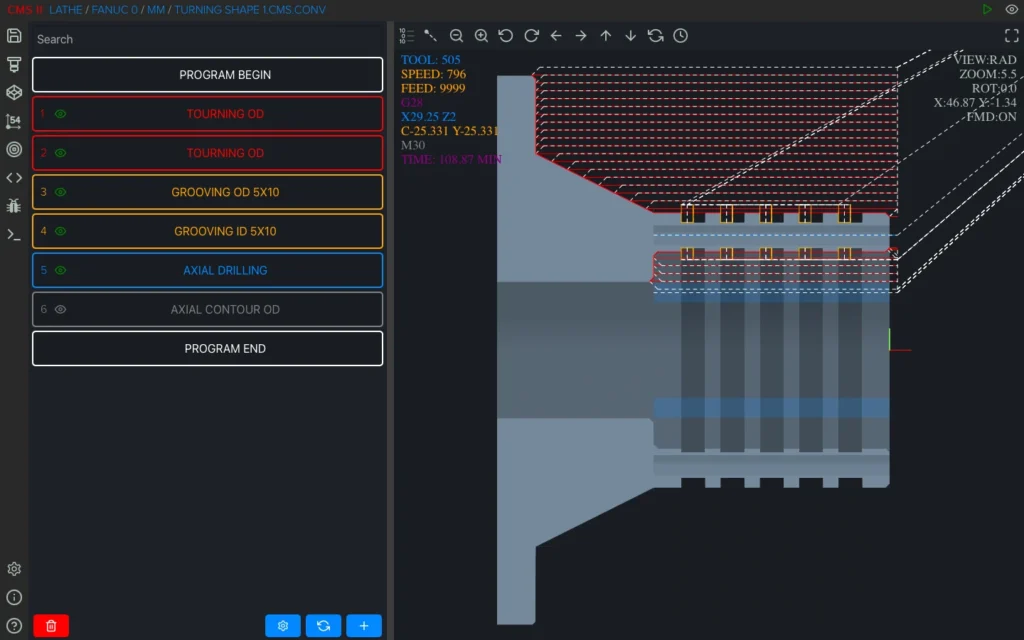
High-Speed Machining (HSM) Strategies
What It Is:
- High-speed machining (HSM) optimizes toolpaths to increase cutting speeds while reducing heat and tool wear.
- Uses light, fast cutting passes instead of deep, slow cuts, improving surface finish and tool life.
Example: In aerospace CNC machining, HSM is used to machine aluminum parts quickly without deforming the material.
How to Use It in CNC Machine Programming:
- Enable G05 (High-Speed Machining Mode) in Fanuc controllers.
- Use trochoidal milling to maintain a constant chip load.
- Reduce stepovers and increase feed rates for smoother tool engagement.
Tip: HSM is ideal for mold-making, aerospace components, and high-precision medical devices.
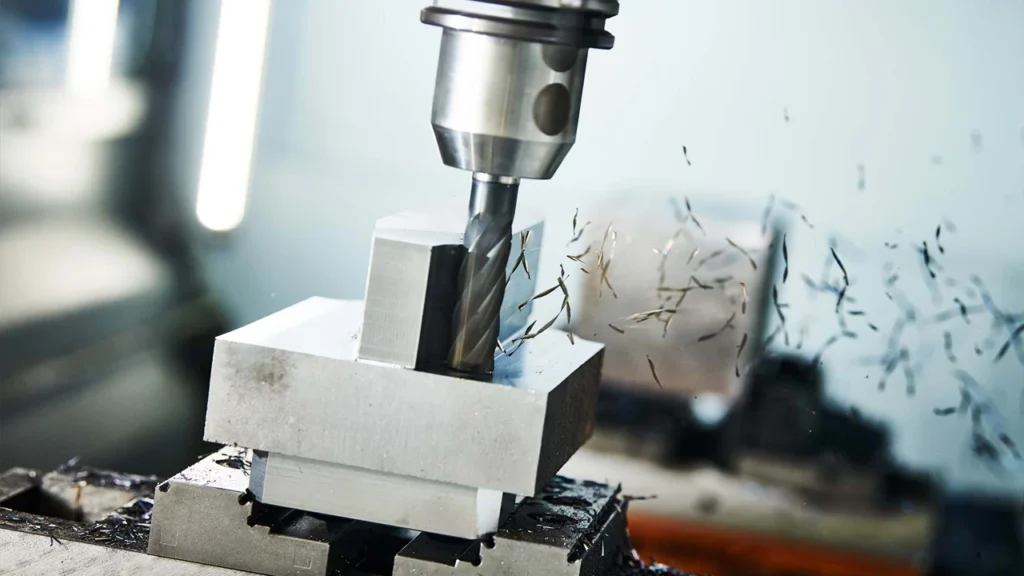
AI & Automation in CNC Machine Programming
What It Is:
- Artificial Intelligence (AI) and automation are revolutionizing CNC machine programming by reducing manual inputs, predicting tool wear, and optimizing cutting strategies.
Example: AI-powered adaptive control systems adjust spindle speed and feed rate in real-time based on tool wear and cutting conditions.
How to Use It in CNC Machine Programming:
- Use AI-powered CAM software to generate optimized toolpaths automatically.
- Implement sensor-based monitoring to detect vibrations and adjust cutting speeds dynamically.
- Integrate robotic tool changers and automated workpiece handling for unmanned production.
Tip: AI-based CNC programming is rapidly expanding in Industry 4.0 smart manufacturing facilities.
Summary: Advanced CNC Programming Techniques
| Advanced Technique | Purpose | Best For |
|---|---|---|
| Multi-Axis CNC Programming | Cuts complex angles in fewer setups | Aerospace, medical, molds |
| Parametric & Macro Programming | Automates repetitive programming tasks | Large-scale manufacturing |
| High-Speed Machining (HSM) | Increases speed & tool life while reducing heat | Aerospace, precision machining |
| AI & Automation | Uses AI to optimize toolpaths & reduce waste | Smart factories, Industry 4.0 |
Mastering advanced CNC machine programming techniques will allow you to increase efficiency, improve precision, and automate production for high-performance machining applications.
Conclusion & Final Thoughts
Mastering CNC machine programming is essential for modern manufacturing, enabling precise and efficient machining across various industries. Whether you’re working with a CNC lathe, milling machine, laser cutter, or router, understanding G-code, M-code, and CAM-based programming is key to optimizing machine performance and productivity.
Key Takeaways from CNC Machine Programming
- CNC machine programming converts digital designs into machine-readable instructions, allowing CNC machines to execute precise tool movements automatically.
- Beginners can start with conversational programming before advancing to manual G-code writing and CAM-based programming.
- Using simulation tools and testing programs prevents machine crashes and production errors.
- Advanced programming techniques like multi-axis machining, parametric programming, and AI-driven automation enhance efficiency and precision.
- Choosing the right CNC machine programming software simplifies programming and improves workflow automation.
Where to Learn More About CNC Machine Programming?
To further improve your CNC programming skills, consider:
Online Courses:
- Udemy – “CNC Machine Programming for Beginners”
- Coursera – “Introduction to CAD/CAM & CNC Programming”
CNC Software Training:
- Fusion 360, Mastercam, SolidCAM official tutorials
Stay updated with Rosnok’s CNC machine programming insights & innovations! Follow us for more expert guides.
However, CNC programming isn’t just about writing code—it’s also about choosing the right CNC machine that supports seamless programming, high accuracy, and long-term reliability.
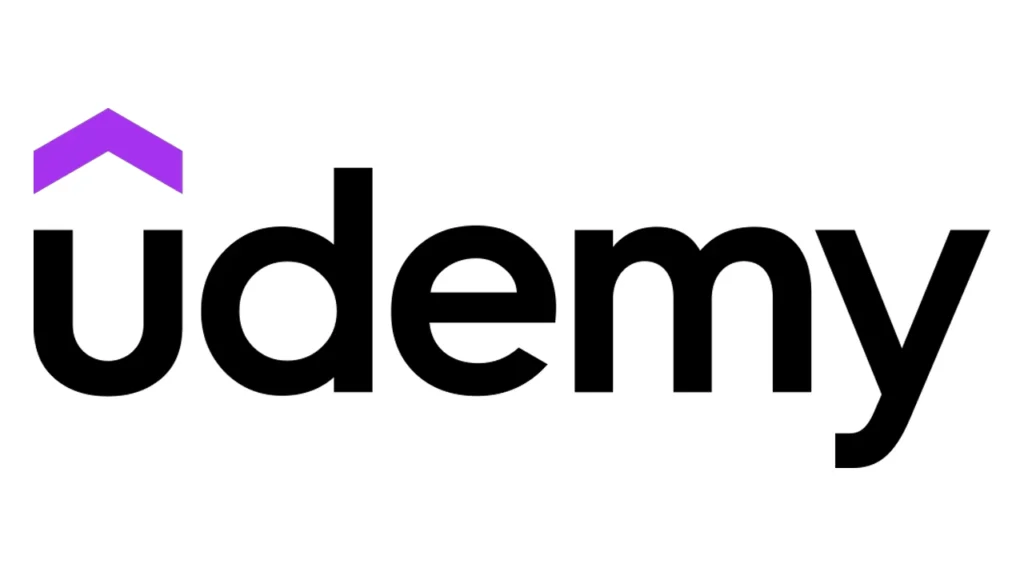
Why Rosnok CNC Machines Make Programming Easier
At Rosnok, we manufacture CNC machines designed for seamless programming, high accuracy, and long-term reliability—powered by the industry’s most trusted CNC control systems.
✅ Industry-Leading CNC Control Systems
✓ Siemens CNC System – Ideal for high-precision machining & automation.
✓ Fanuc CNC System – Globally trusted for reliability & fast processing.
✓ Mitsubishi CNC System – Ensures stable, high-speed control for manufacturing.
✓ SYTEC CNC System – Offers cost-effective, efficient performance.
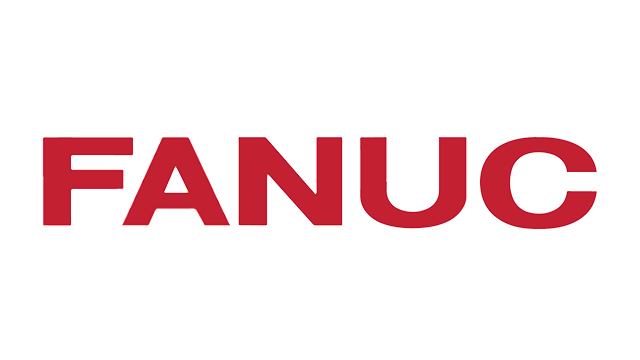
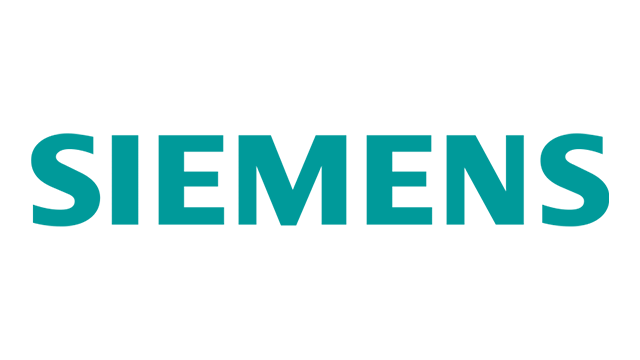

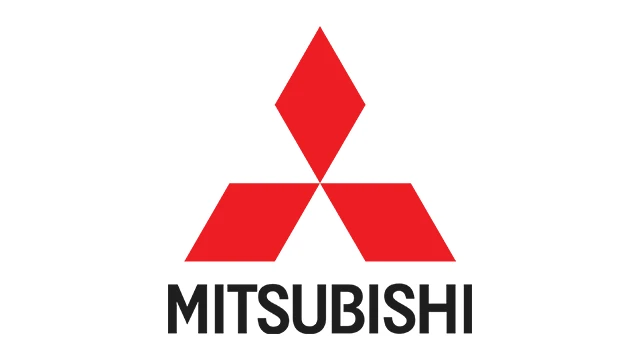
✅ Optimized for Efficient CNC Machine Programming
✓ User-Friendly Interfaces – Intuitive controls make CNC programming simpler & faster.
✓ Seamless Integration – Compatible with Siemens, Fanuc, Mitsubishi, and SYTEC CNC software.
✓ Supports Multi-Axis CNC Programming – Our machines handle 3-axis, 4-axis, and 5-axis machining with ease.
✅ Perfect for Both Beginners & Advanced Users
✓ Conversational Programming & CAM Support – Simplifies complex machining operations.
✓ High-Speed Machining & Smart Toolpaths – Reduces cycle time & improves efficiency.
✓ Strong After-Sales Support – We provide training, software setup, and technical assistance.
• Looking for a CNC machine that makes programming effortless? Contact Rosnok today for the best CNC solutions powered by Siemens, Fanuc, Mitsubishi, and SYTEC CNC systems!
FAQ: CNC Machine Programming
How long does it take to learn CNC machine programming?
Basic CNC machine programming can be learned in a few weeks with focused study. Mastering advanced techniques and multi-axis programming may take several months of practice.
Do I need to know CAD to do CNC machine programming?
No. You can write CNC programs manually without using CAD. However, CAD is useful for creating complex part designs and is often combined with CAM software to streamline the programming process.
Can CNC machine programming be done without using expensive software?
Yes. You can use free or low-cost text editors for manual G-code programming. Many affordable or open-source CAM software options are also available for beginners.
